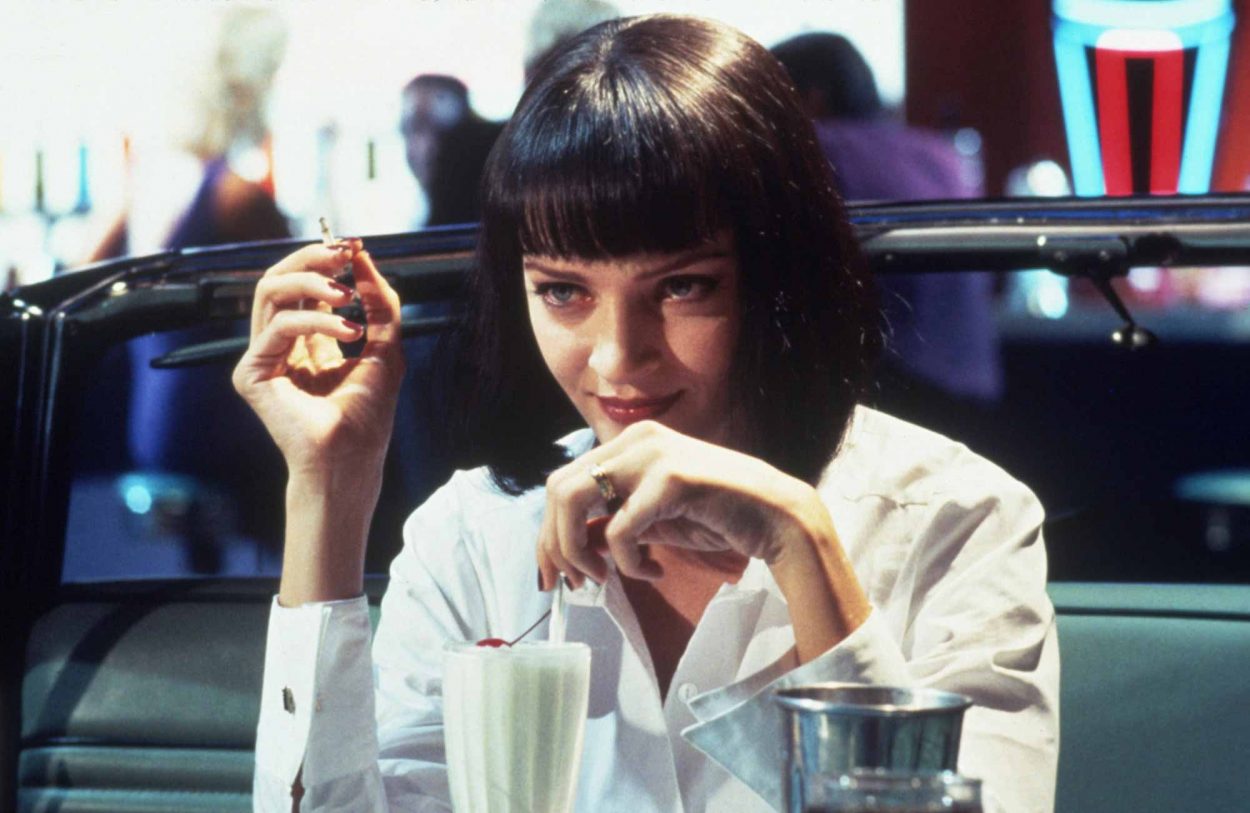“I am too intelligent, too demanding, and too resourceful for anyone to be able to take charge of me entirely. No one knows me or loves me completely. I have only myself.” – Simone de Beauvoir
“That woman deserved better.” – Elle Driver
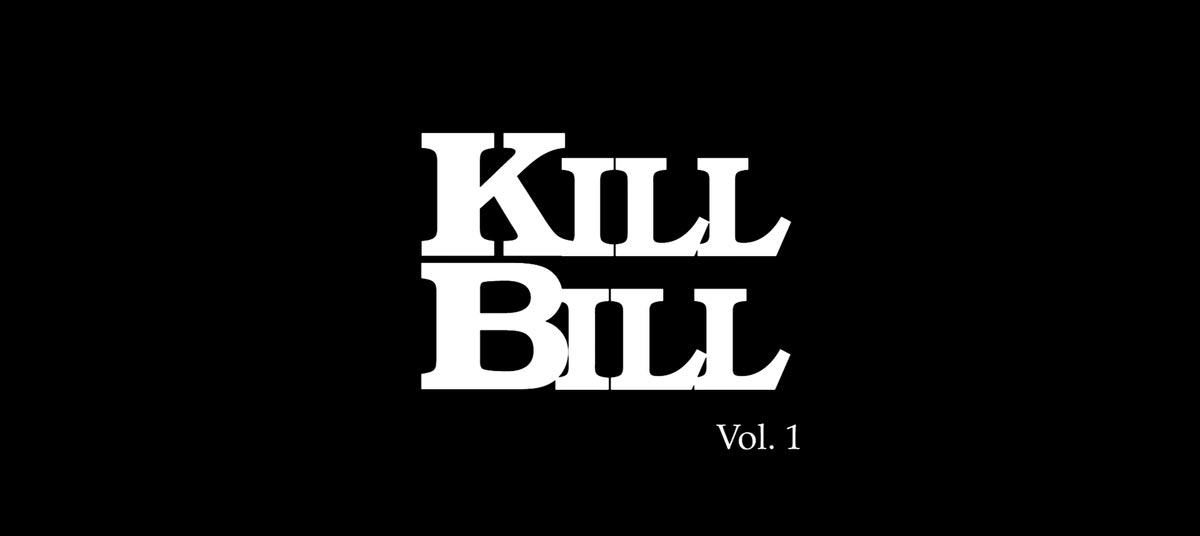
A bride. The first shot of Quentin Tarantino’s Kill Bill: Volume 1 is Uma Thurman’s beautiful, bloodied face, panting in terror. She’s lying on a floor, we don’t know where just yet, but we see damp, straw-haired tendrils and a white veil comingling with blood and broken glass, her sweaty face looking up at the approaching horror. We hear footsteps and then observe ominous, booted heels approaching on wooden ground – a man’s boots. He stops at the blood-soaked bride and asks, “Do you find me sadistic?” We see his hand pat part of her face with a dapper handkerchief, the name “Bill” embroidered on the cloth, giving us a clue that this is not some regular man – this is a man with panache, charm, maybe even a dandy. A deadly one. We never see his face. He continues in a sinister yet soothing tone: “You know, I bet I could fry an egg on your head right now if I wanted to. You know, kiddo, I’d like to believe you’re aware enough, even now, to know that there is nothing sadistic in my actions. Maybe towards those other jokers. But not you. No, kiddo. At this moment, this is me at my most masochistic.” He shoots her before she can end her plea: “Bill. It’s your baby.” Marriage? Children? A normal life? (Whatever that even means?) That’s not only gone but dead gone, and the hope for that settled-down future, the one often rammed down women’s throats from the day they are born, will later be seen splayed out on a chapel floor. The “jokers” of domesticity are now corpses, a gory tableau of normals inadvertently dragged into the extraordinary via this remarkable woman, the Navajo Joe to their Regulars. They have no idea. And so all of that wish fulfillment, and in this case, female wish fulfillment for a family and a nice husband and sweet friends and a steady J-O-B is (as we’ll learn later on) gunned down by non-regular people who are not only angry at the woman in the wedding dress abandoning boot-wearing, hanky-sporting Bill (David Carradine) but also offended that this woman is even attempting any kind of normalcy. A normal life? Why? What is wrong with her? Doesn’t she know how special she is? The specialness that makes Bill masochistic? Blow it all away. Blow it all away before she will blow it all away because, as revealed in the second part of this story, the woman in the wedding dress admits she wouldn’t have made it among the niceties and constancy of El Paso, Texas. She just wanted to save her daughter. And, Bill? He “overreacted.” Granted, with the benefit of Kill Bill: Volume 2 in my mind as I watch this scene, I know that Volume 1 has more complexity and contemplation in less than five minutes of screen time than often given credit for. But even without Volume 2 filling in the details of the Bride’s choice taken from her, the moment is so visually powerful, so emotionally bracing, you can sense it without knowing the backstory. With her terrified breathing and expressive eyes staring up at the man, the father/lover/killer voice hints at the Bride’s connubial connection, but more importantly, to something more exotic, exceptional, much more terrifying, and, perhaps, even beautiful. She’s not of this earth. Neither is he. That takedown in the chapel makes the Bride’s next chapter, another disruption of domesticity and mother death, a potent comeuppance. In the city of Pasadena, California, in a cute little house with an ice cream truck passing by, one of the five who wronged her – Vernita Green/Copperhead (Vivica A. Fox) – is killed by the bride, and in front of Vernita’s daughter (not the Bride’s intention but, perils of the job). It’s a beautifully choreographed scene, complete with hand-to-hand combat, knives, pots and pans, a kicked coffee cup and now famously, a box of breakfast cereal; but it suggests something deeper than all that. Chiefly, no way is Vernita Green going to continue on in this nice house with her nice doctor husband and her nice box of KABOOM cereal. The Bride will snuff that out just as they tried to snuff her normalcy out. Another double-edged sword, another questioning of womanhood: to be the best, at the expense of a “normal life,” or to run towards domestic comfort? Aren’t there any other choices? And why are both so damn hard to sustain?
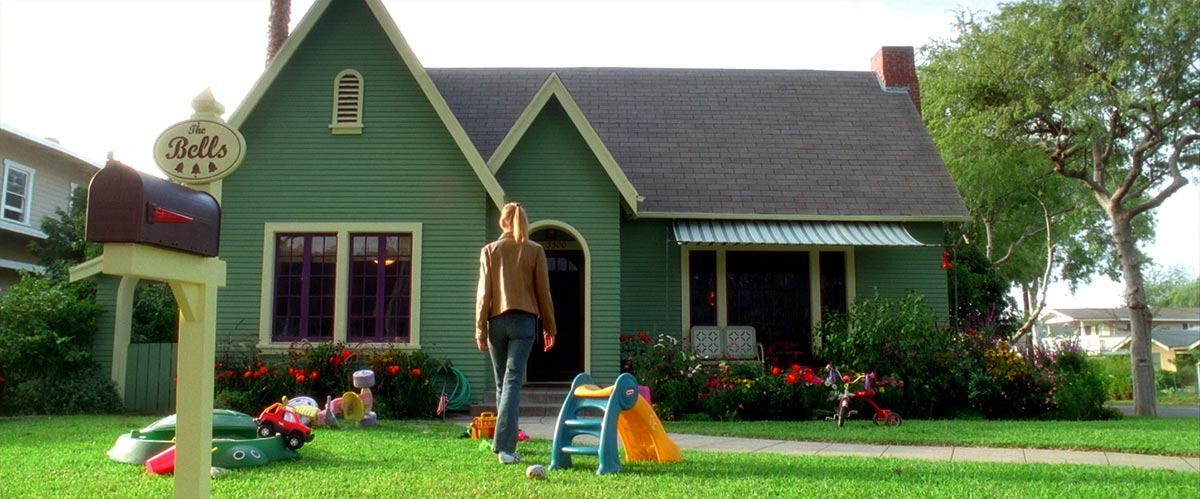
A masterful medley of female empowerment, grindhouse, Hong Kong action cinema, samurai pictures, yakuza movies, kung-fu, Spaghetti Western, blaxploitation, Jack Hill, Brian De Palma, Kinji Fukasaku, They Call Her One Eye, and too many more to list, but decidedly a Quentin Tarantino picture through and through (is there any other movie like this one?), Kill Bill: Volume 1 makes Thurman’s Black Mamba (in Volume 2, revealed to be Beatrix Kiddo) the iconic centerpiece – the Marlene, the Grier, the Bruce Lee, the Bronson, the Van Cleef, the Woman With No Name. She exists in an alternate universe as a super being, but her feelings, her mixtures of hard edges and sensitivity, her occasional vulnerability, even how she breathes and sweats and tires, gives her an emotional honesty and allegorical intensity that one feels deeply. Struggle. Violation. Revenge. The movie seeps into your bloodstream with such cathartic potency, that certain scenes leave you stunned and stirred.
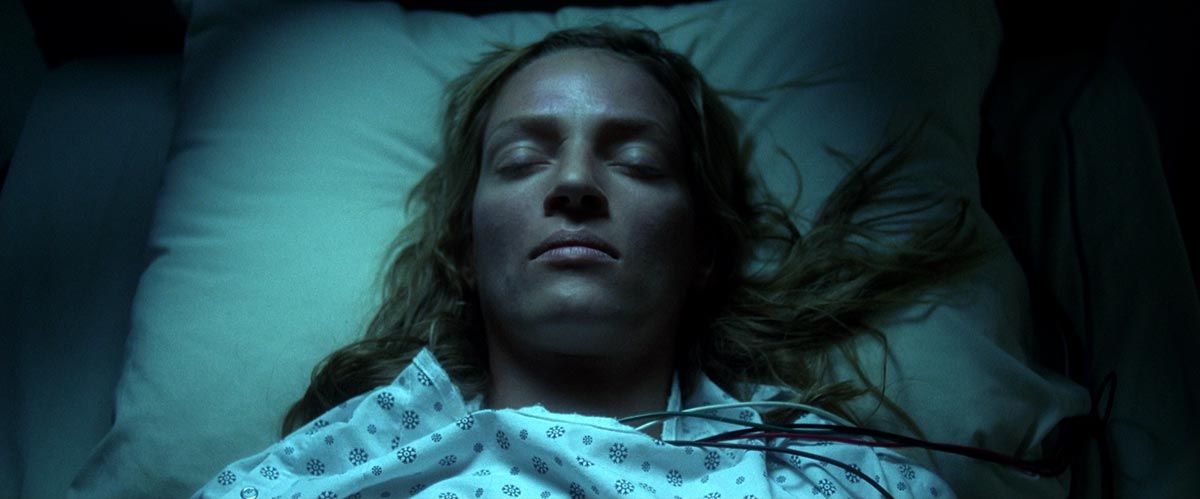
So back to the Bride, four years after being left for dead in that bloodied El Paso wedding (it’s a rehearsal, which makes me wonder if she’d ever have made it down the aisle regardless of the assassination). She wakes up from her lengthy coma, opens her eyes and bolts upright in her hospital bed. She realizes – no baby. She yells and sobs in despair. And, then, oh fuck. As if this woman hasn’t been through enough, here comes the next trial of being female: rape. She learns she’s been repeatedly defiled while asleep all those years, and, as she can see, it’s about to happen again. When the repulsive offender attempts to mount her, she bites his tongue off. Good. She then slams her nurse/“pimp’s” head (Buck, who “likes to fuck”) in the door (“Where’s Bill?!”), kills him and grabs his car keys. What’s on his key chain? “Pussy Wagon.” Wheelchair bound, legs atrophied, and rolling into the parking lot to Isaac Hayes’ “Truck Turner,” the Bride matches the keychain with the brightly colored muscle-truck – “Pussy Wagon” is emblazoned on the back. The look on her face is perfect, a cynical no surprise and then a bright thrill of escape dances across her eyes. The scene is some kind of cruel joke on the defiled Bride but, then, if a disgusting douchebag is going to brag about the pussy he robbed from you, you rob his pussy. And you drive that wagon until it breaks down.
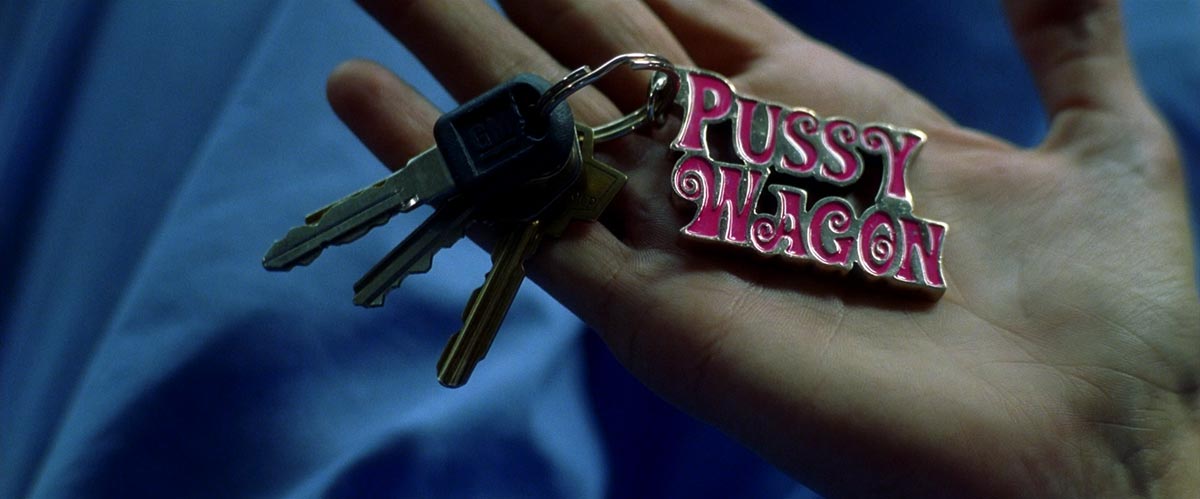
The movie then follows the Bride on her hero’s journey, (something we rarely see with women in movies) and like the good student she is, she writes out the death list of the Deadly Viper Assassination Squad (DiVAS – a group she once belonged to) in a MEAD spiral notebook: O-Ren Ishii/Cottonmouth (Lucy Liu), Elle Driver/California Mountain Snake (Daryl Hannah), Vernita Green/Copperhead (Fox, whom we’ve already seen killed), Budd/Sidewinder (Michael Madsen), and, of course, Bill. She’s Okinawa-bound, and, in a gorgeously shot, disarmingly bittersweet sequence tuned to Zamfir’s “The Lonely Shepherd,” she’s set to receive her Hattori Hanzo sword from an icon, Sonny Chiba. It’s a loving moment of post irony (before people used that term) with Tarantino using Zamfir, he of the magic pan flute, so poignantly, so prettily, that you’re a little overwhelmed by it all. Sonny Chiba, you know you love. You then realize you’ve just fallen in love with Zamfir too.
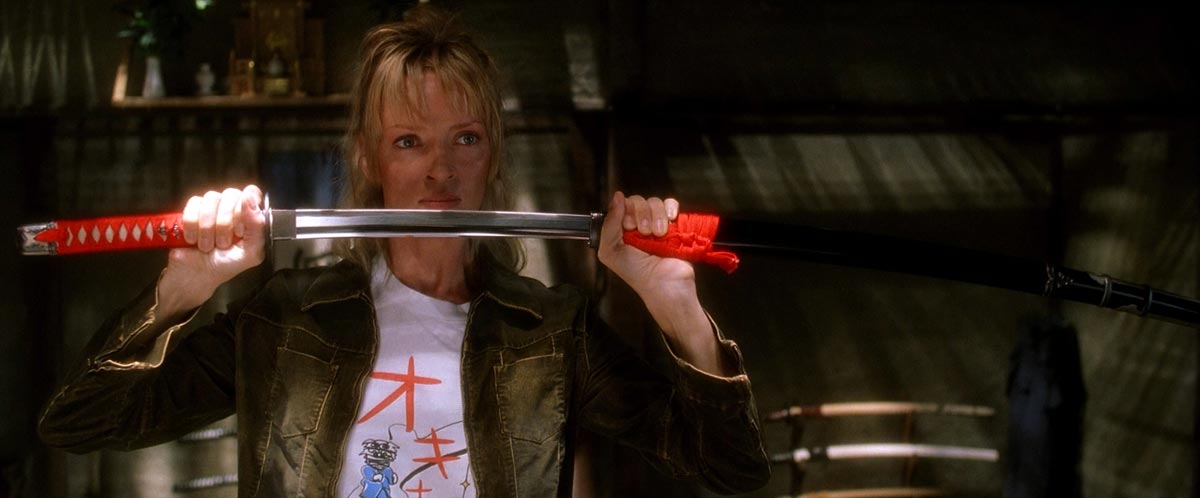
The Bride is on to another woman (she’s already dodged “Twisted Nerve” whistling Elle Driver thanks to Bill’s instructions), and consistent with the pro-woman power of the picture, one she truly respects. That’s O-Ren Ishii whose origins (explained in a striking ten-minute anime sequence) reveal her past hardship and destroyed family. I’m not certain, but every woman in this picture seems to lack a father or mother or any kind of family, with Bill serving as their substitute daddy, or pimp. But these once lonely little girls grew up to become powerful, self-possessed, highly intelligent, and, yes, vicious women, but ones who are respectful of female power. (They were also born gifted) So when the Bride seeks revenge at the House of Blue Leaves in a breathlessly exciting, lyrical work of cinema (shot by Robert Richardson), it’s with admiration – one warrior to another. Filmed like a piece of modern opera, the sequence moves in stages of violent distress, humor, emotion, and spectacle as homage upon homage is layered on top of each other, moments moving gracefully; Tarantino allowing the Bride to occasionally stop, breathe heavily, become tired from all the violence. The violence is effectively surreal and stylized – blood spurts out of bodies like geysers and when the Bride takes on O-Ren’s entire yakuza crew (“The Crazy 88”), the nightclub floor is littered with severed limbs and various body parts. And it’s glorious. You never once doubt the Bride’s abilities, nor O-Ren’s. You also never doubt O-Ren’s sadistically endearing schoolgirl bodyguard, Go-Go (Chiaki Kuriyama, from Kinji Fukasaku’s masterpiece, Battle Royale), swinging her Master of the Flying Guillotine-inspired bladed ball and chain. And, shown in flashback, you don’t doubt her seriousness about penetration – as in, a young man penetrating her. Don’t even flirt about it. She will penetrate you – with a blade. We get the feeling she has no father either, or something made her this way, maybe a father.
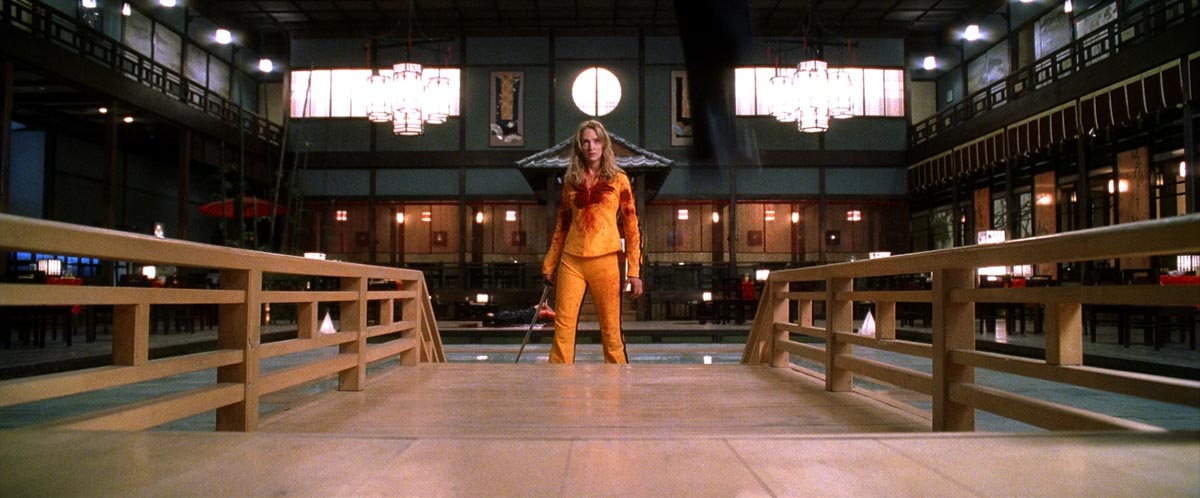
Adding another complicated element of female empowerment tangled up in male brilliance and toxicity is the real life all girl Japanese surf/rockabilly/garage rock band, the 5.6.7.8’s, who play at the club. Their first song is a cover – “I’m Blue” – written by innovator Ike Turner, whose partner was the super human Tina Turner, and who had his own powerful crew of DiVAS, the Ikettes – the women who originally sang the tune. The bare-footed 5.6.7.8’s have no man backing them and they make this song their own, but it’s an intriguing parallel of beautiful, powerful, even intimidating women in the front, Tina and the Ikettes, not hiding behind a man, just as none of these women hide behind Bill. And one of them, Tina and the Bride, escaping with their lives. Moving forward to Volume 2, You can even hear Ike Turner echoing an absurdly downplaying Bill: “I overreacted.”
“You overreacted?!”
With that in mind, all of the picture’s visual and aural references intertwine brilliantly with Tarantino’s meaning and mise-en-scène. From Nancy Sinatra opening the proceedings with her haunting, heartbroken “Bang Bang” (written by Sonny Bono) to Quincy Jones’s funky/red-hot-rage Ironside theme song to riffs ranging from blaxpoitation to Bernard Hermann to Ennio Morricone (I mentioned Zamfir – beloved Zamfir), Tarantino (and RZA) fill the picture with an eclectic collage of music that merges with the visuals, adding import and depth and humor and mystery. No wonder, in Volume 2, we learn that the Bride was setting up normal life to work in her future husband’s record store. She gets to listen to music all day. If this is her soundtrack, we almost believe she could handle civilian life. Almost. But not quite.
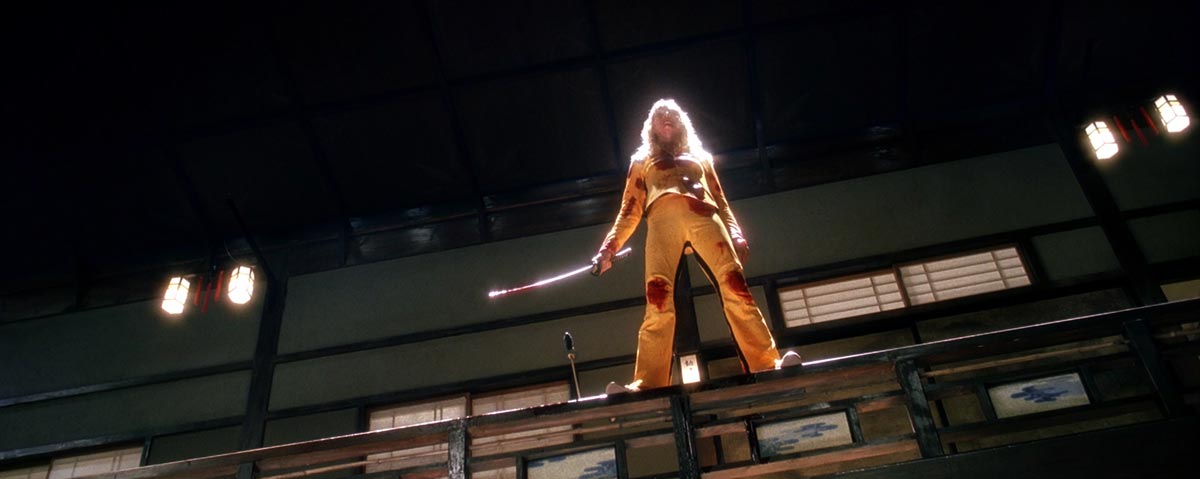
You get the sense that the Bride would have something to avenge, she’s a natural born killer (so says Bill), and she’s a protective mother. And Tarantino, gloriously unapologetic about expressing cinematic pro-vigilance, crafts movies that deliver both pulpy, cathartic satisfaction and a complicated look at how we process violence – historical, political, personal or otherwise. All of his pictures – Reservoir Dogs, Pulp Fiction, Kill Bill, Death Proof, Inglourious Basterds, Django Unchained, The Hateful Eight, even the less violent Jackie Brown – have exhibited his interest in the grandeur and meaning of violence, aesthetically and thematically. And while we’re entertained by the mayhem, many of us are enriched, even moved. These movies are not just simplistic revenge tales. There’s another level working within these sometimes-fantastical retributions, and, in the case of Kill Bill, a next level reprisal felt by women specifically. Tarantino has always written and directed complicated, interesting women, and Kill Bill is so female-centric that it’s downright feminist, something certain women (writers, academics and viewers) noticed when watching the movie (I recall an argument, way back when, expressing this thought, and to a man – most women who like QT’s films agree with me); but many critics, even ones who loved the picture, rarely discussed just how important this felt.
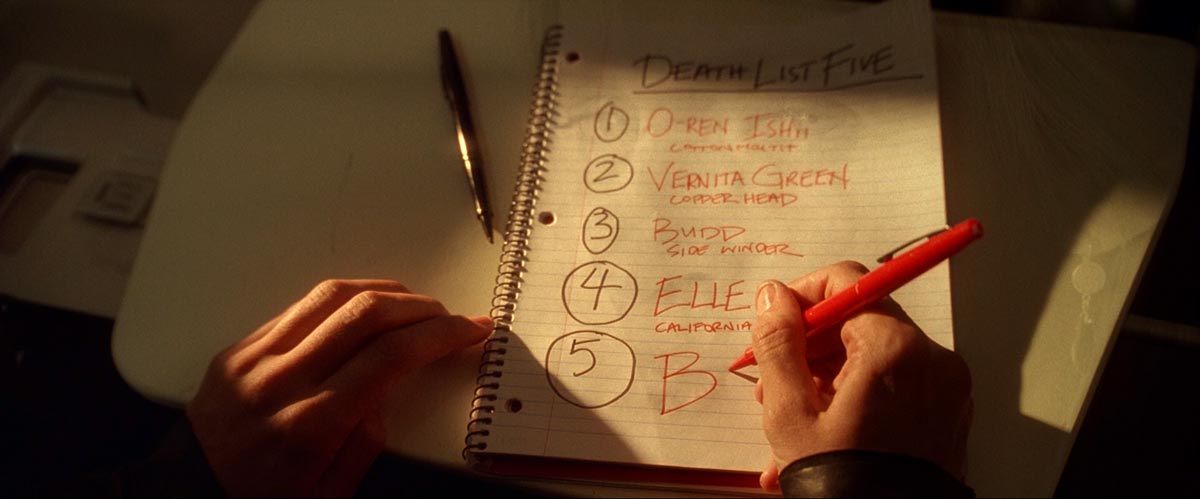
In 2003, we’d had some great ones before – the Alien pictures, the Terminator series and The Long Kiss Goodnight (not to mention Gun Crazy, Faster, Pussycat! Kill! Kill!, the work of Pam Grier, I Spit on Your Grave, Ms. 45 even the unfairly maligned Lipstick earlier, among others) but women needed this particular movie. The Charlie’s Angels pictures were visually fun, candy-coated McG creations that looked like fabulous David LaChapelle photo layouts (that is not a bad thing, not at all), but they were just that: fun. And cute. Kill Bill: Volume 1 wasn’t cute. Uma Thurman wasn’t dancing around in her underwear. She was donning Bruce Lee’s famous yellow Game of Death jumpsuit. You don’t think that some, perhaps, many women fantasize about wearing that suit and taking down an army of yakuza? You thought wrong. Kill Bill (both volumes) is a masterpiece, a masterpiece for everyone, but a masterpiece that moves many women to Zamfir-magic-pan-flute-level fantastical catharsis. And, no, I am not overreacting.


